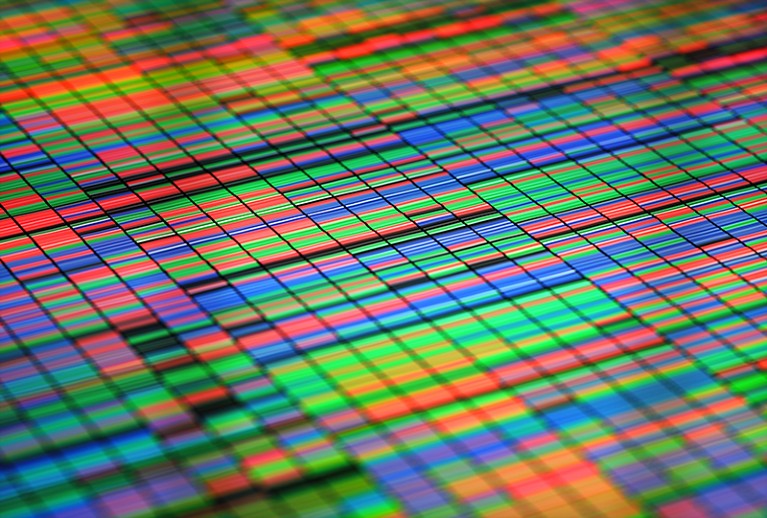
Credit: Kiyoshi Takahase Segundo / Alamy Stock Photo
The 2009 influenza pandemic prompted the fastest global vaccine development effort in history. But it wasn’t fast enough.
By the time vaccine companies had designed, tested and distributed hundreds of millions of doses of licensed vaccines — a process that, using the best technologies available, took about 6 months — the pandemic wave had already swept across the world.
Wanting to speed up the development clock, scientists at Novartis teamed up with collaborators at the J. Craig Venter Institute and Synthetic Genomics and, using synthetic biology techniques, devised a way of turning genetic sequence data from a novel virus into a vaccine candidate in a matter of days.
Instead of using killed or weakened viruses, as most vaccine developers had done in the past, the Novartis-led team planned to deliver carefully designed RNA segments, which would instruct cells in the body to create a protein that imitates part of the target virus and primes the immune system to attack if the real virus enters the cell.
In 2011, the researchers beta-tested this novel vaccine platform in response to a mock influenza pandemic. That preparation then paid off richly when, 2 years later, in March 2013, Chinese health officials announced three cases of people infected with a novel strain of avian influenza.
The same Novartis-led team jumped into action.
The researchers downloaded the virus’s gene sequences from the internet. Within a week, they had chemically synthesized the genes encoding the vaccine antigens and created a fully synthetic RNA-based vaccine that was ready for preclinical testing. They also inserted the same gene sequences into a genomic backbone common to many flu viruses to fashion an inactivated-virus vaccine that entered human testing in August 2013.
That vaccine candidate quickly proved safe and immunogenic. And by the end of the year, Novartis had already begun mass-manufacturing the vaccine, allowing the US government to amass a strategic reserve of the product.
Fortunately, that strain of influenza did not become a global pandemic. But the speedy development, clinical testing and stockpiling of an effective synthetic vaccine against bird flu set the stage for current efforts to rapidly address the outbreak of novel coronavirus disease.
The possibility of using synthetic genes for rapid vaccine development against emerging infections also became one of the main goals of the Coalition for Epidemic Preparedness Innovations, a global partnership established in 2016. Plus, synthetic genes paved the way for oncology-focused companies to generate cancer vaccines individualized to the specific DNA sequence of a patient’s tumour.
Several such personalized cancer vaccines are now in clinical testing. More than a dozen gene-based vaccines are also in the works to fight COVID-19.
Notably, the scientists behind all those experimental coronavirus vaccines have essentially followed the same playbook established by the Novartis-led researchers years earlier: they each started with genomic data from the mysterious new virus first reported in Wuhan, China, and — informed by 3D protein structures deciphered soon thereafter — worked at record-breaking speeds to make candidates available and ready for clinical testing.
On 16 March 2020, just 66 days after the viral genome was released, clinicians administered the first dose of the first vaccine candidate in a first-in-human trial. Others soon followed.
As the race for a COVID-19 vaccine intensifies, time is clearly on the side of synthetic biology. But will the approach ultimately prove safe and effective? Only time will tell.

 Nature Milestones in Vaccines: Interactive Timeline
Nature Milestones in Vaccines: Interactive Timeline
 Synthetic generation of influenza vaccine viruses for rapid response to pandemics. (Dormitzer, P. R. et al., 2013)
Synthetic generation of influenza vaccine viruses for rapid response to pandemics. (Dormitzer, P. R. et al., 2013)